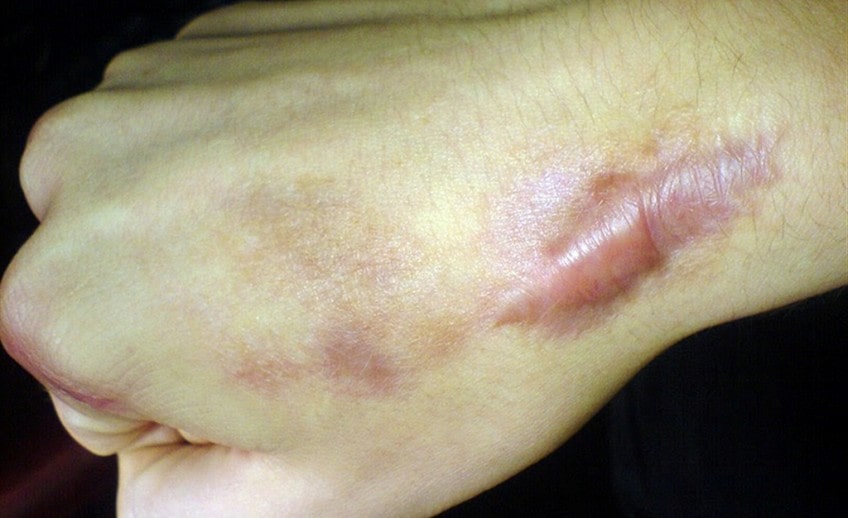A keloid scar is defined as a thick, elevated scar. As with any skin injury, it can appear anywhere, but it typically appears on the chest, shoulders, cheeks, or earlobes. If one is prone to getting keloids, there may be multiple sites where they develop. Although keloid scars do not pose a physical threat to one’s health, they can be upsetting emotionally. Early intervention or prevention is the key to removing these scars.
In this blog, we will learn in detail about the symptoms, causes, treatment options and prevention tips for keloid scars. To make this post informative, the inputs have been gathered from Dr. Nivedita Dadu. She is a renowned skin specialist for performing the Best Keloid Treatment in Delhi. Keep reading to learn.
Signs And Symptoms
It is possible for a keloid scar to develop months or years after the initial injury. Some indications and symptoms could be:
- Scarring that is thick and uneven, usually on the middle chest, cheeks, shoulders, and earlobes
- Skin that is raised, lumpy, hairless, and shiny
- Varied size, based on the extent of the initial injury and the time at which the keloid stops expanding
- Varied texture, ranging from rubbery and soft to firm and stiff
- Itching
- Discomfort
Causes of Keloids
The exact cause of keloid scars is unknown to experts. However, the majority concur that the wound-healing process is probably malfunctioning. The protein collagen, which is present in every part of the body, aids in the healing of wounds, but excessive collagen production can result in keloids. Any kind of skin injury, including burns, hair removal, acne, injections, insect bites, and even minor scratches and bumps, can cause keloids to grow. Sometimes, keloids develop for no apparent reason at all. Keloids are neither contagious nor cancerous.
Treatment Options for Keloid Removal
Depending on the circumstances, one or more strategies may work best. One must also understand that the keloids might regrow even after they have been successfully removed or flattened. The following are the treatment options available for keloid scars:
- Wound Care
First-line therapy for more recent keloids may consist of compression dressings composed of elastic or other materials. This technique is also applied to remove keloids post-surgery. The goal is to minimize or completely prevent scarring by using pressure on the wound while it heals. For these dressings to be effective, they must be worn for 12 to 24 hours daily for four to six months. This method can be very uncomfortable.
- Corticosteroid Cream
Using a corticosteroid cream with a prescription can help reduce itching.
- Injected Medicine
In cases where the keloid is smaller, the doctor may attempt to inject cortisone or other steroids into it to thin it out. It might take up to six months of monthly injections before the scar flattens. Spider veins, skin thinning, and a permanent change in skin color (hypo- or hyperpigmentation) are possible side effects of corticosteroid injections.
- Laser Treatment
Laser therapy sessions can flatten larger keloids. This treatment has also been effective in reducing itching and making keloids disappear. The pulsed-dye laser treatment is administered in multiple sessions, separated by a period of 4 to 8 weeks. It is possible that the doctor will suggest combining cortisone injections with laser therapy. Potential side effects include hypo- or hyperpigmentation, blistering, and crusting; these are more common in individuals with darker skin.
- Radiation Therapy
Scar tissue can be reduced in size or minimized with low-level X-ray radiation, either on its own or following keloid surgical excision. It may be necessary to receive additional treatments. Skin issues and, over time, cancer are possible side effects of radiation therapy.
- Surgical Removal
The doctor may suggest surgically removing the keloid in addition to other treatments if it has not responded to other treatments.
Future Prevention Of Keloids
There are methods to stop keloids from developing. If one already has keloids, they can take steps to keep them from returning.
- Avoid Elective Surgeries
If an individual has had surgery-related keloids or suspects they may develop them, they may want to reconsider having elective surgery. Surgical procedures that are unnecessary to preserve one’s life or enhance their health can be classified as elective surgeries.
- Do Not Get Piercings Or Tattoos
Keloids are frequently caused by tattoos and body piercings. They may be regarded as elective surgery in certain ways. If one gets tattoos or piercings and they are prone to keloids, carefully consider whether or not they want keloids.
- Refrain From Popping Zits And Picking At Skin
Avoid picking or popping pimples on the skin as much as possible. Keloids may result from the inflammation these habits cause.
Conclusion
Keloids are a result of heightened versions of the body's natural scarring processes. There are various treatments available to remove these scars. If one is looking for the Best Dermatologist in Delhi for keloid treatment, one may consult with Dr. Nivedita Dadu. Visit the Skinology Clinic now to take advantage of cutting-edge keloid scar treatments. The clinic's locations are Rajouri Garden in West Delhi and Vasant Vihar in South Delhi.





Comments